CBCT Scan
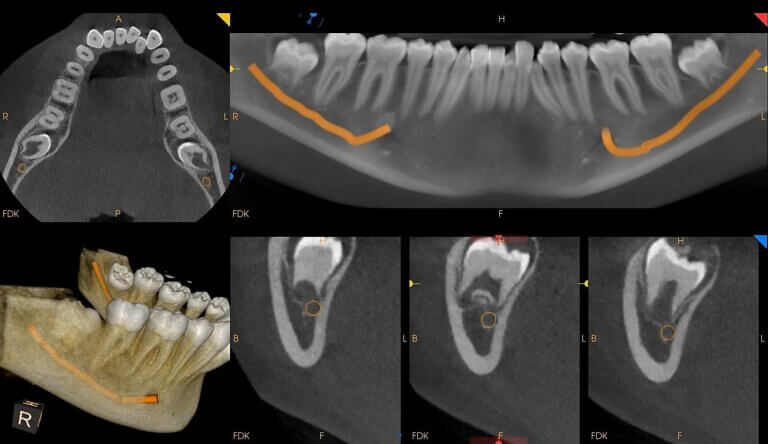
What Is A CBCT Scan?
Advanced imaging technologies have revolutionized the way dental professionals diagnose and treat various oral conditions. One such groundbreaking technology is the Cone Beam Computed Tomography (CBCT) scan. This non-invasive imaging technique provides dentists and specialists with detailed 3D images of a patient’s oral structures.
CBCT scans have extensive applications in the field of dentistry, ranging from implant planning and oral surgery to the assessment of complex dental issues such as impacted wisdom teeth, temporomandibular joint (TMJ) disorders, and root canal complications. With its ability to produce high-definition images, CBCT has become an invaluable tool in delivering personalized and effective dental care.
Before you deciding on whether CBCT Scan are right for you, there are some things you should know:
- Who Needs CBCT Scan?
- What Are The Advantages Of CBCT Scan?
- What Are The Potential Risks Or Complications Of CBCT Scan?
- What Are The Alternative Treatments If I Do Not Choose CBCT Scan?
- How Much Does CBCT Scan Cost?
- What Are The Steps In The CBCT Scan Procedure?
- Can I Have CBCT Scan If I Am Pregnant?
If you have any further questions about CBCT Scans or other dental services offered at Atlas Dental, please contact us.

Free phone consultation
Have questions about CBCT Scans? Schedule a free phone consultation with our Toronto dentist.

5 star google reviews
Our patients love us! See for yourself why more and more people are choosing Atlas Dental for their CBCT Scans.

Book CBCT Scan Online
We provide quick and convenient CBCT Scan Service in Toronto. Book Online.
Who Needs CBCT Scan?
Cone Beam Computed Tomography (CBCT) scans have proven to be an invaluable tool in modern dentistry, providing detailed and accurate images that aid in the diagnosis and treatment planning of various dental conditions. While CBCT scans offer numerous advantages, they are not necessary for every dental patient. Dental professionals judiciously recommend CBCT scans based on specific indications:
- Dental Implant Planning: For patients considering dental implants, CBCT scans play a pivotal role in the preoperative planning process. These scans provide a comprehensive view of the jawbone’s structure, density, and proximity to vital structures like nerves and sinuses. By analyzing this data, dentists can determine the optimal placement of the implant, ensuring its long-term success and reducing the risk of complications.
- Evaluation of Impacted Teeth: CBCT scans are instrumental in assessing impacted teeth, which are teeth that fail to erupt properly through the gumline. Whether it’s impacted wisdom teeth or other molars, CBCT scans offer a detailed visualization of the tooth’s position and orientation, enabling dentists or oral surgeons to plan safe and efficient extractions.
- Diagnosis of TMJ Disorders: Temporomandibular joint (TMJ) disorders can cause significant discomfort and pain in the jaw joint. CBCT scans aid in evaluating the TMJ’s structure, identifying any abnormalities, and guiding the development of appropriate treatment strategies.
- Evaluation of Root Canal Complications: In complex endodontic cases or when standard X-rays prove insufficient, CBCT scans can be employed to assess the root canal system thoroughly. This allows endodontists to accurately diagnose issues such as root fractures, canal curvature, and persistent infections, leading to more successful root canal treatments.
- Assessment of Pathologies and Tumors: CBCT scans help in the early detection and assessment of oral pathologies, cysts, and tumors. By visualizing the size, location, and extent of these abnormalities, dental professionals can promptly plan for biopsies or refer patients to specialists for further evaluation.
- Orthodontic Treatment Planning: CBCT scans assist orthodontists in creating precise treatment plans for patients requiring orthodontic interventions. By visualizing the teeth and jaw relationships in 3D, CBCT scans enable orthodontists to devise tailored treatment approaches, such as braces or Invisalign clear aligners, for optimal results.
- Evaluation of Trauma: In cases of dental trauma or facial injuries, CBCT scans help assess the extent of damage to the teeth, jawbone, and surrounding structures. This aids in formulating comprehensive treatment plans for restoring dental function and aesthetics.
It’s essential to note that while CBCT scans provide invaluable information, they also involve a slightly higher radiation dose compared to traditional dental X-rays. Therefore, dentists carefully consider the risk-benefit ratio before recommending CBCT scans and ensure that the benefits outweigh the potential risks, especially for pregnant women and children. If you have further questions about CBCT Scans, please contact us.
What Are The Advantages Of CBCT Scan?
The Cone Beam Computed Tomography (CBCT) scan offers numerous advantages in dental diagnostics and treatment planning, making it an indispensable tool for dental professionals. Some of the key advantages of CBCT scans include:
- Precise 3D Imaging: CBCT scans provide high-definition, three-dimensional images of the oral structures, offering a comprehensive view from multiple angles. This detailed visualization allows dental professionals to assess dental anatomy, bone density, and the spatial relationship between teeth, nerves, and other vital structures with exceptional accuracy.
- Improved Diagnostic Capabilities: CBCT scans excel in diagnosing complex dental issues that may not be apparent with traditional 2D X-rays. It aids in the early detection of dental abnormalities, pathologies, and structural anomalies, leading to more accurate and timely diagnoses.
- Treatment Planning: CBCT scans play a crucial role in treatment planning for various dental procedures, such as dental implants, oral surgeries, and orthodontic treatments. The 3D images help dentists visualize the patient’s unique anatomy and develop personalized treatment plans, enhancing treatment precision and overall success.
- Reduced Need for Additional Imaging: The comprehensive nature of CBCT scans often reduces the necessity for multiple imaging studies. With a single CBCT scan, dental professionals can obtain a wealth of information, minimizing the need for additional X-rays and reducing patient radiation exposure.
- Faster and Non-Invasive: CBCT scans are quick, typically taking only a few seconds to capture the necessary images. Unlike traditional medical CT scans, CBCT scans are non-invasive and do not require contrast dyes or extensive patient preparation.
- Greater Patient Comfort: Patients generally find CBCT scans more comfortable than traditional CT scans. The scan duration is short, and patients remain still during the process, minimizing any discomfort or anxiety associated with the procedure.
- Enhanced Implant Success: For dental implant planning, CBCT scans provide essential information about the bone quality, quantity, and location, ensuring precise implant placement. This significantly contributes to the success and longevity of dental implants.
- Orthodontic Applications: In orthodontics, CBCT scans aid in assessing tooth and jaw relationships, identifying impacted teeth, and planning orthodontic treatments effectively. It enables orthodontists to create more personalized treatment plans, leading to improved outcomes for patients.
- Visualization of Soft Tissues: CBCT scans not only show dental structures but also provide some visualization of surrounding soft tissues, such as muscles and nerves. This can be beneficial in evaluating temporomandibular joint (TMJ) disorders and other soft tissue-related conditions.
- Enhanced Patient Education: CBCT scans facilitate clear and interactive communication between dental professionals and patients. Visualizing their own 3D images helps patients better understand their dental conditions, potential treatment options, and actively participate in their oral health decisions.
Overall, CBCT scans have revolutionized dental imaging and treatment, enabling dentists and specialists to deliver more precise, efficient, and patient-centered care. The advantages of CBCT technology make it an invaluable asset in modern dentistry, contributing to improved diagnostic accuracy, treatment outcomes, and patient satisfaction. If you have further questions about CBCT Scans, please contact us.
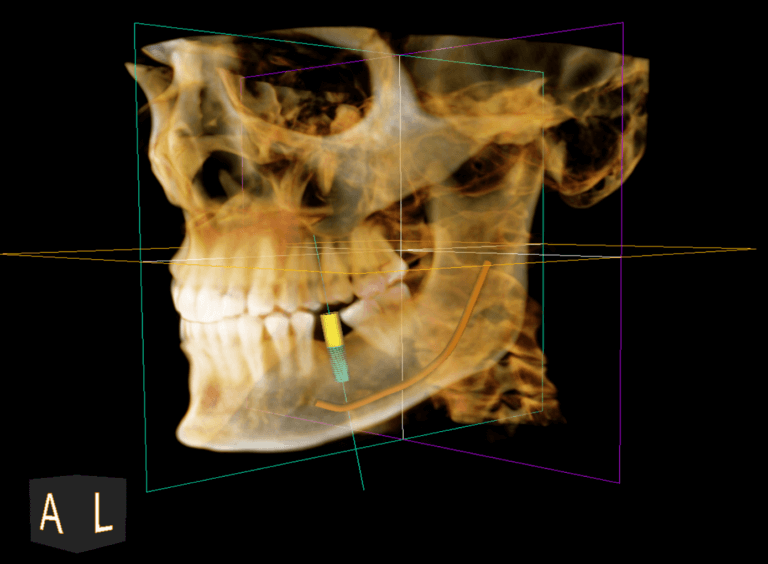
What Are The Potential Risks Or Complications Of CBCT Scan?
While Cone Beam Computed Tomography (CBCT) scans offer invaluable benefits in dental diagnostics and treatment planning, it’s essential to be aware of the potential risks and considerations associated with this advanced imaging technology. Dental professionals are cautious in recommending CBCT scans and take necessary precautions to ensure patient safety. Let’s explore the potential risks and complications of CBCT scans:
- Radiation Exposure: CBCT scans utilize X-rays to capture detailed 3D images of the oral structures. While the radiation dose from a single CBCT scan is generally considered low, it is higher than that of traditional dental X-rays. Prolonged or repeated exposure to radiation may pose a potential risk, especially for pregnant women and young children. However, advancements in CBCT technology have led to lower radiation doses, and dentists use lead aprons and collars to shield sensitive areas during the scan.
- Motion Artifacts: Movement during the CBCT scan can result in motion artifacts on the images, potentially compromising their quality and diagnostic accuracy. Patients must remain as still as possible during the brief scan duration to obtain clear and reliable images.
- Confounding Findings: CBCT scans provide highly detailed images, but sometimes the level of information can lead to incidental findings that may not be related to the initial reason for the scan. The dental professional may need to interpret these findings carefully to avoid unnecessary follow-ups or treatments.
- Financial Considerations: CBCT scans can be more expensive than traditional dental X-rays. Patients should discuss the cost of the procedure with their dental provider and weigh the potential benefits against the financial implications, especially if the scan is not covered by insurance.
- Pregnant Women: For pregnant women or individuals concerned about radiation exposure, dentists will exercise extra caution and, if possible, opt for alternative imaging methods that pose lower radiation risks. Patients are encouraged to openly communicate with their dental provider, sharing any pertinent medical history, including pregnancy, allergies, or past radiation exposure, to ensure the safest and most appropriate imaging approach.
It’s important to emphasize that the vast majority of patients undergo CBCT scans without experiencing any adverse effects. Dental professionals are trained to use CBCT technology judiciously, ensuring that the benefits outweigh the potential risks for each patient’s unique situation. If you have further questions about CBCT Scans, please contact us.
What Are The Alternative Treatments If I Do Not Choose CBCT Scan?
While Cone Beam Computed Tomography (CBCT) scans offer a wealth of information for precise diagnosis and treatment planning, some patients may have concerns about radiation exposure or may not be suitable candidates for this imaging technique. In such cases, dental professionals have alternative treatments and imaging options available:
- Traditional Dental X-rays: Traditional dental X-rays, also known as 2D radiographs, remain a commonly used imaging method in dentistry. They involve minimal radiation exposure and are suitable for routine dental examinations, detecting cavities, evaluating the bone level, and assessing the general health of the teeth and supporting structures. While traditional X-rays offer valuable information, they do not provide the comprehensive 3D visualization that CBCT scans offer.
- Panoramic Radiographs: Panoramic radiographs, also called panoramic X-rays, provide a broad view of the entire oral cavity, capturing the upper and lower jaws, teeth, and surrounding structures in a single image. They are useful for assessing dental development, impacted teeth, and general dental health. Although they do not offer the same level of detail as CBCT scans, panoramic radiographs are a viable alternative in certain cases.
- Magnetic Resonance Imaging (MRI): In some instances where CBCT scans are not suitable or when soft tissue evaluation is crucial, dental professionals may refer patients for an MRI. MRIs do not involve ionizing radiation and are excellent for visualizing soft tissues, such as the muscles, ligaments, and nerves in the head and neck area. However, MRIs can be more expensive and may not be readily available in all dental practices.
- Clinical Examination: For certain dental conditions, a thorough clinical examination by the dentist or specialist may suffice to reach a diagnosis and devise a treatment plan. Clinical assessments, combined with the use of traditional X-rays, can often provide enough information to address common dental issues effectively.
It’s important to note that the decision to forego a CBCT scan should be made in consultation with your dental provider. Dental professionals will carefully evaluate your specific dental concerns, medical history, and risk factors before recommending the most suitable alternative treatment or imaging option. The goal is always to ensure patient safety and provide the most accurate and appropriate dental care. If you have further questions about CBCT Scans, please contact us.
Cost of CBCT Scan
The cost of a CBCT scan ranges from $227 to $388.50 depending on the size of the scan. The oral radiologist’s report is typically made available after 10 business days, but for an expedited turnaround time (within 2 business days) a $50 surcharge will apply. The codes relevant to CBCT Scans in the Ontario Dental Association’s Suggested Fee Guide appear as follows:
Radiographs, Cone Beam Computerized Tomography (CBCT), Acquisition
- 07011 – Small field of view (e.g. sextant or part of, isolated temporomandibular joint): $127
- 07012 – Large field of view (1 arch): $206.45
- 07013 – Large field of view (2 arches): $288.50
Radiographs, Cone Beam Computerized Tomography (CBCT), Interpretation
- 07032 – Two units (30 minutes): $100
The Ontario Dental Association’s Suggested Fee Guide is a proposed fee structure that dentists in Ontario may or may not follow. Please consult with your dentist about fees before going ahead with treatment.
CBCT scans are usually considered a supplementary service by dental insurance plans and may or may not be covered by your dental insurance. Be sure to find out from your dental insurance plan provider how much you are eligible for before going ahead with dental treatment. Your dentist can help you submit a predetermination to your dental insurance.
For patients without dental insurance, Atlas Dental is pleased to offer dental financing through Dentalcard. Affordable payment plans start at 7.95% for terms of 6 months to 6 years. To learn more about Dentalcard dental treatment financing, follow this link.
What Are The Steps In The CBCT Scan Procedure?
Undergoing a Cone Beam Computed Tomography (CBCT) scan is a straightforward and non-invasive process. The procedure is usually conducted in a dental or radiology office equipped with CBCT imaging technology. If your dentist or oral healthcare professional has recommended a CBCT scan, here are the typical steps you can expect during the procedure:
- Preparation and Explanation: Before the scan begins, the dental staff will provide you with detailed pre-visit instructions about the CBCT procedure. They will address any concerns you may have and obtain your informed consent for the scan.
- Removal of Metal Objects: To avoid interference with the imaging process, you will be asked to remove any metal objects or accessories from your head and neck area, such as jewelry, glasses, hairpins, hearing aids, or removable dental appliances.
- Head Positioning: You will be guided to sit or lie down on a designated chair or scanner bed, depending on the type of CBCT machine used. The dental professional will ensure you are comfortably positioned and immobilized to minimize motion artifacts during the scan. Proper head positioning is essential for obtaining accurate images. You may be asked to bite down on a bite block or rest your chin on a chin rest to stabilize your head during the scan.
- Radiation Safety Measures: The dental staff will take necessary radiation safety measures to protect you from unnecessary exposure. This may involve using lead aprons or collars to shield sensitive areas, especially for pregnant women or children.
- Scan Acquisition: Once you are correctly positioned, the CBCT machine will be activated, and the scan acquisition will begin. The machine rotates around your head, capturing a series of X-ray images from various angles to create a 3D representation of your oral structures. It is crucial to remain as still as possible during the scan, as any movement can affect the quality and accuracy of the images. The actual scan duration is relatively short, typically ranging from 10 to 40 seconds, depending on the type of CBCT machine and the area being scanned.
- Image Processing: After the scan is complete, the collected data is processed by specialized software to generate detailed 3D images of your teeth, jawbone, and surrounding structures. Once the images are ready, a trained dental professional, such as a dentist or oral radiologist, will interpret and analyze the CBCT images to make an accurate diagnosis and develop a tailored treatment plan, if necessary.
- Follow-up Consultation: In a follow-up appointment, your dentist will discuss the findings from the CBCT scan with you, explain any identified dental issues, and recommend appropriate treatment options based on the results.
It’s essential to communicate openly with your dental provider about any relevant medical history, allergies, or concerns before the CBCT scan. With proper preparation and adherence to safety protocols, the CBCT scan procedure provides valuable insights that aid in delivering effective and personalized dental care, contributing to improved oral health outcomes. If you have further questions about CBCT Scans, please contact us.
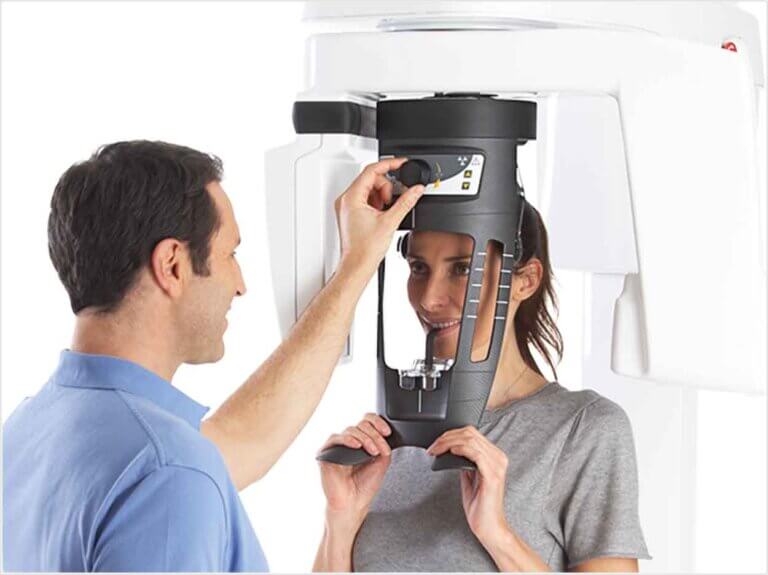
Can I Have CBCT Scan If I Am Pregnant?
Pregnancy is a special time that requires careful consideration of any medical procedures or diagnostic tests. When it comes to Cone Beam Computed Tomography (CBCT) scans, the use of ionizing radiation raises concerns about potential risks to the developing fetus. As such, the decision to undergo a CBCT scan during pregnancy requires thoughtful evaluation and consultation with both your dentist and obstetrician. Here are some essential points to consider:
- Minimizing Radiation Exposure: CBCT scans involve X-rays, which can potentially harm the developing fetus, especially during the first trimester when organ formation is occurring. As a precautionary measure, healthcare providers generally try to avoid using ionizing radiation, including CBCT scans, during pregnancy.
- Postponing Non-Essential Scans: In non-emergency dental situations, CBCT scans are usually postponed until after childbirth to ensure the safety of the unborn child. If the dental issue is not urgent, it is advisable to wait until after pregnancy to undergo the scan.
- Radiation Shielding: If a CBCT scan is deemed necessary during pregnancy, the dental provider will take specific precautions to reduce radiation exposure to the abdomen and fetus. Lead aprons and thyroid collars may be used to shield sensitive areas and limit radiation exposure.
- Alternative Imaging Options: Whenever possible, alternative imaging methods that do not involve ionizing radiation, such as ultrasound or Magnetic Resonance Imaging (MRI), may be considered as safer options during pregnancy. These imaging techniques use non-ionizing radiation and are generally considered safe during pregnancy.
- Informed Decision-Making: The decision to have a CBCT scan during pregnancy should be based on a thorough discussion between the patient, dentist, and obstetrician. The potential risks and benefits of the procedure must be carefully weighed to make an informed decision that prioritizes the health and safety of both the mother and the unborn child.
- Immediate Disclosure: If you suspect or discover that you are pregnant and have a scheduled CBCT scan, it is crucial to inform your dental provider immediately. Early disclosure allows the dental team to reevaluate the necessity of the scan and make any necessary adjustments to your treatment plan.
Remember, the health and well-being of both the mother and the developing baby are of utmost importance. Dental professionals and obstetricians work together to provide safe and appropriate care during pregnancy. If there are any uncertainties or concerns regarding a CBCT scan during pregnancy, do not hesitate to contact us.
We also think you’ll like…

Dental Pain Medication
Dental Pain Medication What Is Dental Pain Medication? Dental pain can range from a mild discomfort to intense throbbing, making even the simplest tasks unbearable.
Bicon Dental Implants
Bicon Dental Implants What Are Bicon Dental Implants? Bicon is a well-respected dental implant company known for its innovative approach to implantology and its unique
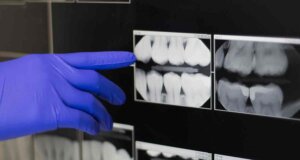
Digital Dental X-Rays
Digital Dental X-Rays What Are Digital Dental X-Rays? Dental X-rays have been an essential tool in dentistry for decades, aiding dentists in detecting various oral
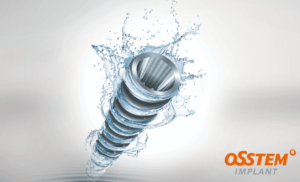
Osstem Dental Implants
Osstem Dental Implants What Are Osstem Dental Implants? Osstem is a prominent South Korean dental implant company that has made significant strides in the field
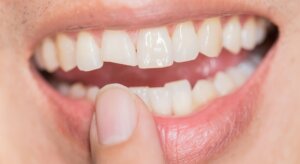
Chipped Dental Implant Bridge
Chipped Dental Implant Bridge What Is A Chipped Dental Implant Bridge? A dental implant bridge is a type of dental prosthetic that is used to
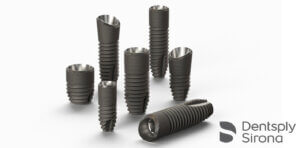
Astra Tech Dental Implants
Astra Tech Dental Implants What Are Astra Tech Dental Implants? Astra Tech is a respected dental implant brand owned by Dentsply Sirona known for its commitment

